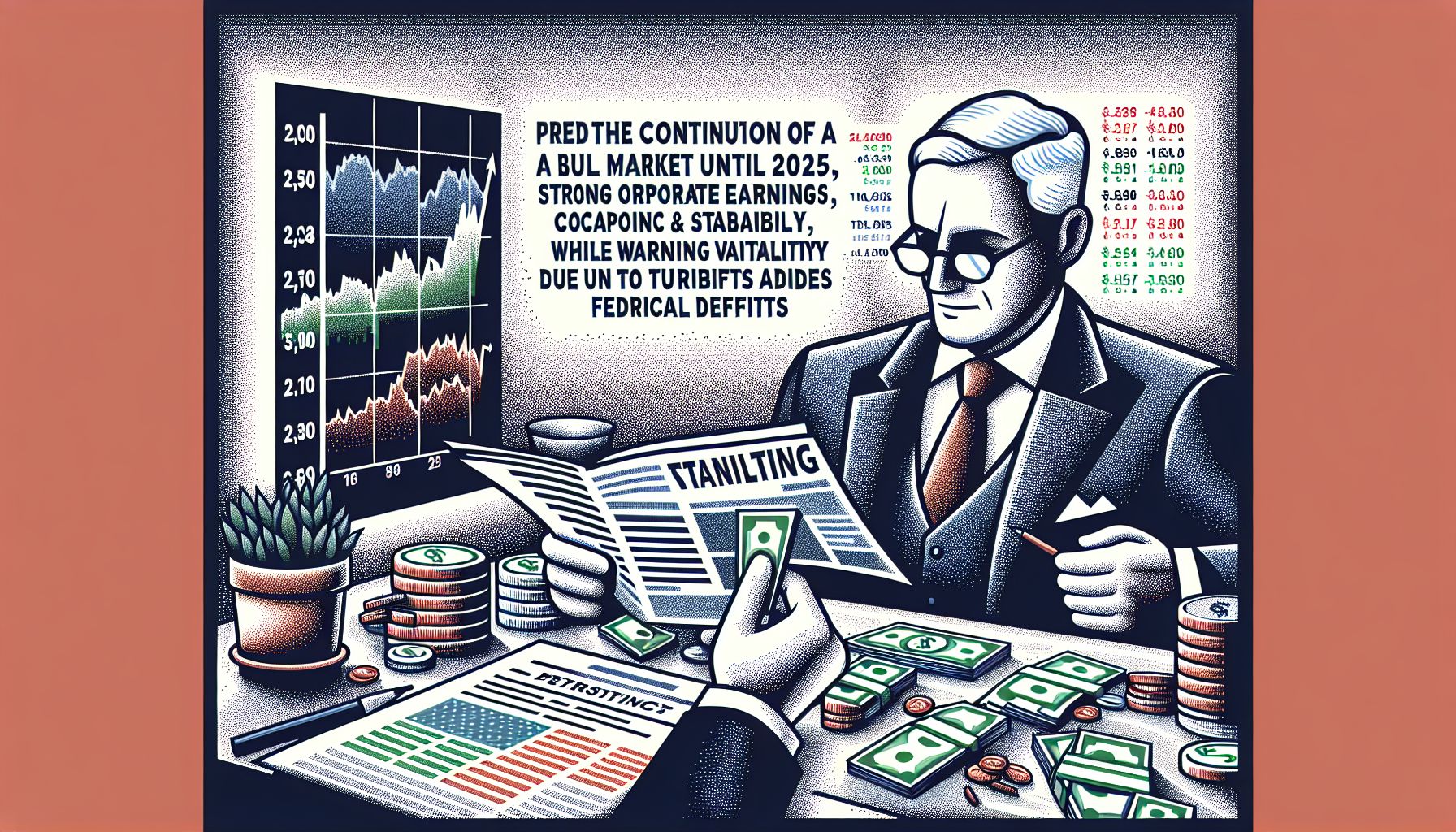Economist Predicts Continued Bull Market Through 2025

New York, Wednesday, 13 November 2024.
Jeremy Siegel forecasts an extended bull market into 2025, citing strong corporate earnings and economic stability. He warns of potential volatility from tariffs and federal deficits, expecting bond yields to settle between 4.5-5%.
Economic Outlook and Market Dynamics
Jeremy Siegel, a renowned economist from the Wharton School and a senior economist at WisdomTree, projects a continuation of the bull market into 2025. This optimistic forecast is underpinned by robust corporate earnings and an environment of economic stability. Siegel’s analysis suggests that the easing of inflationary pressures, particularly on essential commodities like oil, has created a favorable setting for sustained market growth[1]. However, he cautions that while the bull market sentiment is strong, the high valuations of stocks remain a critical watch point for investors[2].
Factors Influencing the Bull Market
The driving forces behind this projected market upswing include ongoing corporate tax cuts and relaxed regulatory measures under the current administration. These fiscal policies have significantly bolstered equities, positioning them to benefit from anticipated earnings growth, despite concerns over potential economic headwinds. The market’s resilience is further supported by the performance of major tech companies, which have shown no immediate signs of weakening[3]. Siegel believes that the productivity gains could help maintain an inflation rate between 2-2.5%, aligning with a stable economic expansion[1].
Potential Risks and Economic Challenges
Despite the optimistic outlook, Siegel warns of potential volatility stemming from geopolitical and fiscal concerns. Notably, President Trump’s aggressive trade stance, exemplified by the proposed 60% tariff on Chinese goods, poses a risk to companies reliant on these imports. Although Siegel expects these threats to soften, they represent a significant concern for market stability[2]. Additionally, the federal budget deficit remains a looming threat, with bond market investors wary of policies that could exacerbate government debt and inflation. This sentiment was echoed in the post-election spike in bond yields, a clear signal of the markets’ caution regarding unchecked deficits[3].
Bond Market Dynamics and Future Projections
Siegel anticipates that as the Federal Reserve edges towards potential rate cuts, bond yields may trend upwards, potentially reaching a level of 4.5-5% for the 10-year bond. This adjustment reflects a natural equilibrium in response to the current economic policies and market conditions. Investors are advised to remain vigilant regarding developments in tariffs and the federal deficit, as these could lead to increased volatility in the bond market[1]. Siegel’s insights underscore the need for a balanced approach, where the benefits of tax policies are measured against the risks of fiscal expansion[2].